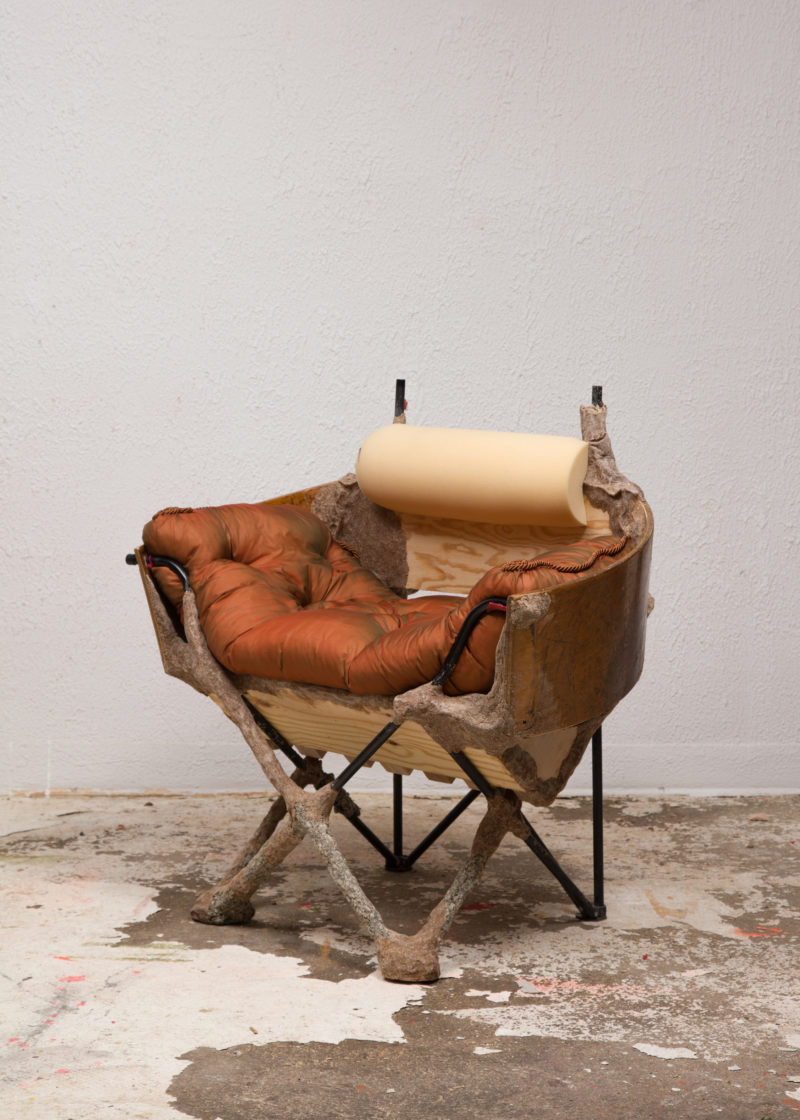At first glance, Jessi Reaves’s sculptures look like abandoned furniture waiting to be reupholstered: out of order, innards outward. A closer look reveals a careful arrangement of materials that have been quilted, bound, and glued together to create objects that are at once surreal and familiar.
The sculptures override historically imposed lines between art, design, and craft. Reaves integrates ready-made objects into her constructions—chairs, car fenders, shop fans, lamps. Her sculptures function as both utilitarian objects and representations of utilitarian objects. She references (or includes) classic modern furniture designs by household names: Isamu Noguchi, Philip Johnson, Marcel Breuer. Assembled in a gestural, almost painterly fashion, the sculptures evince a funny sense that Reaves has set free a decorative subconscious that once lay bound within the forms.
Without making any overt reference to the body, her sculptures manage to feel oddly human, which contributes to the works’ strange, ineluctable attraction. Uncanny upholstery, slipcovers, and drapery techniques give the work a corporeal presence. (After graduating from RISD in 2009, Reaves worked in upholstery.) It seems natural that her work has been linked with art-leaning circles in fashion. Reaves has collaborated on multiple occasions with RISD classmates Mike Eckhaus and Zoe Latta of Eckhaus Latta, and with John Galliano, creating a centerpiece installation for the Maison Margiela’s 2018 spring couture show in Paris.
I met Reaves in her studio in Chelsea, in Manhattan, situated in what was once the stable of an old carriage house, to discuss her process and her piece Crust Bucket Comes to Town (Slipper Chair) (2016).
—Eliza Barry
THE BELIEVER: For Crust Bucket Comes to Town, did you start with a sketch of a shape or form and then look for the materials that fit into that idea? Or did you work based on the materials you had at the time?
JESSI REAVES: It’s definitely different from piece to piece, but with this one I had the materials. Or at least half of them. The main element to start with was the frame of a collapsible camping chair. I actually had that frame only because of a collaborative piece, a table called Crust of the Lake, that I made with a friend, the artist Robert Bittenbender. He was using this camping chair as the chair in his studio and it had ripped in the seat. I went to his studio to talk about our collaboration and was completely sidetracked by this thing he had done to repair the chair. He had taken barbecue skewers, like the wooden ones you use to make shish kebabs with, and he had poked them through and woven them...
You have reached your article limit
Sign up for a digital subscription and continue reading all new issues, plus our entire archives, for just $1.50/month.
Already a subscriber? Sign in





